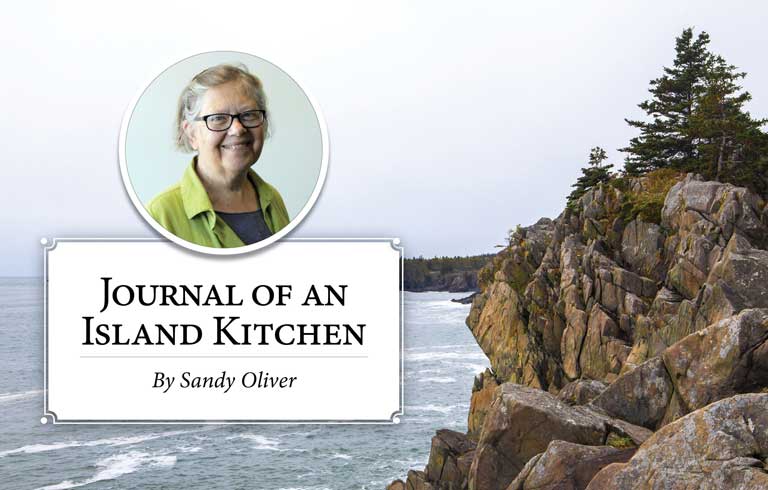Cooking food made it possible for ancient human bodies to divert energy from digesting food to evolving larger brains, according to biological anthropologist Richard Wrangham, who wrote Catching Fire, a book to warm a cook’s heart.
For millennia, pre-historic humankind cooked food before they made pottery, before metal of any kind, using rocks heated with wood, peat, or dung fires long before coal, oil, gas, or induction cooktops.
Even if we think we need this or that newfangled pan or gadget, the plain fact is you can make a meal using a wood fire and rocks. A simple iron pot just makes it easier to cook sloppy things.
The First Nations traveled down the Penobscot River to summer here, dig, steam, and eat clams just as we moderns do…
Our island’s shores are dotted with shell middens, evidence of generations of the First Nations who traveled down the Penobscot River to summer here, dig, steam, and eat clams just as we moderns do, using wood and rocks to cook them.
Humans all around the globe cooked food by heating rocks with fire, then burying food on top of them wrapped in leaves or here, in piles of seaweed. Rock and fire cookery seems to be a universal human technique, taught to succeeding generations who learned at parental knees, without going online or looking at a YouTube video to learn how to do it.
Nowadays we do this kind of thing for fun. I went to a barbecue in Arizona once where brisket was wrapped in fabric alongside beans in pots, and buried in a coals-filled pit closed up overnight. There was music and a cattle auction, all pretty festive.
Early New Englanders did clam bakes for fun, a summer by the seaside kind of picnic with hot rocks and seaweed, clams and lobsters, and daintier comestibles brought from home. Capt. Emery Bunker, in whose house I now live, attended a clambake and ballgame at the Narrows in the later 1800s. “That was resting,” he said.
Yup. Nothing more restful than hauling a bunch of rocks around to make a large pile, dragging driftwood to burn, tending a fire for a couple of hours, and tugging large quantities of wet seaweed to cover the clams that some soul dug for a vigorous period of time. Let’s hope the clams were plentiful and easy to find and that the rocks were left over from a previous bake.
Personally, I love cooking on fire. A fireplace in an early period house with crane and hooks to suspend the pots and kettles from, and a brick or stone oven on the side is splendid.
Watching fire is mesmerizing, and managing the coals and flames to simmer, boil, roast, grill, and bake is wonderfully direct. For those of us used to turning a knob, or these days pressing a little key pad to set a temperature, cooking over a changeable fire requires a different kind of engaging attention not so often called for in modern cookery.
I used to think that romanticizing the quality of food baked in a brick or stove oven was a little on the balderdashy side, but bread baked in one is better than that baked in the metal box of a modern stove. I love watching the domed ceiling of a fireplace oven turn white as it heats from the flames licking upward inside it.
Heating rocks for a lobster bake is another absorbing task, maintaining a brisk, lasting fire with small diameter wood burning quickly for enough time to turn those rocks white, too. White hot. Hardly seems possible until you see them grow paler and you can feel the sharp heat.
Thank the Lord, a kind younger man assembled the rocks and hauled seaweed and wood. All I had to worry about was keeping a brisk fire while the rocks heated and afterwards, ponder what exactly was going on under all that steaming seaweed.
Then I did a bean-hole supper, cooking good old yellow eyes in iron kettles in a stone-lined fire pit in the tradition of the logging industry’s river drives when the cook traveled ahead of the drive and built fires in bean-holes, set the lumbermen’s dinner-filled kettles inside and buried them.
The last time I baked beans with live fire was when I took advantage of burn pile coals, harvested and heaped around my iron bake kettle. Can’t waste good, glowing coals.
Funny thing is some prehistoric human watching me heat rocks with a wood fire might puzzle about the iron kettle, but would totally get it about the cooking technique.
Sandy Oliver is a food historian who lives, gardens, cooks, and writes on Islesboro. She may be contacted at SandyOliver47@gmail.com.





